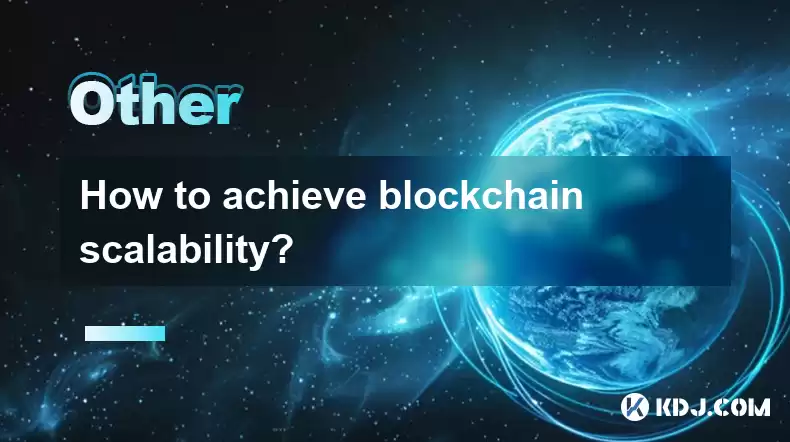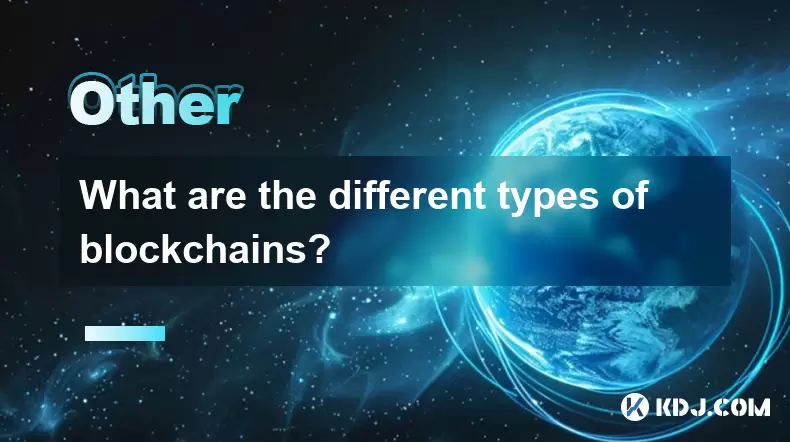-
 Bitcoin
Bitcoin $112400
-1.07% -
 Ethereum
Ethereum $3409
-3.27% -
 XRP
XRP $2.784
-6.60% -
 Tether USDt
Tether USDt $0.9997
-0.03% -
 BNB
BNB $739.3
-2.09% -
 Solana
Solana $158.0
-2.90% -
 USDC
USDC $0.9998
-0.02% -
 TRON
TRON $0.3213
-0.94% -
 Dogecoin
Dogecoin $0.1929
-5.01% -
 Cardano
Cardano $0.6974
-2.82% -
 Hyperliquid
Hyperliquid $36.69
-2.31% -
 Sui
Sui $3.327
-4.80% -
 Stellar
Stellar $0.3672
-5.18% -
 Chainlink
Chainlink $15.65
-3.07% -
 Bitcoin Cash
Bitcoin Cash $525.0
-1.68% -
 Hedera
Hedera $0.2291
-6.00% -
 Avalanche
Avalanche $20.91
-2.96% -
 Ethena USDe
Ethena USDe $1.000
0.00% -
 Toncoin
Toncoin $3.520
-1.12% -
 UNUS SED LEO
UNUS SED LEO $8.968
0.14% -
 Litecoin
Litecoin $105.7
0.26% -
 Shiba Inu
Shiba Inu $0.00001181
-1.79% -
 Polkadot
Polkadot $3.492
-2.08% -
 Uniswap
Uniswap $8.800
-3.10% -
 Dai
Dai $0.9999
-0.01% -
 Monero
Monero $289.9
-3.17% -
 Bitget Token
Bitget Token $4.243
-1.27% -
 Pepe
Pepe $0.00001006
-3.67% -
 Cronos
Cronos $0.1248
-5.68% -
 Aave
Aave $249.7
-2.50%
How to achieve blockchain scalability?
Blockchain scalability is crucial for handling higher transaction volumes; solutions include increasing block size, sharding, and Layer 2 technologies like payment channels.
Apr 18, 2025 at 01:43 pm

Introduction to Blockchain Scalability
Blockchain scalability refers to the ability of a blockchain network to handle a growing amount of work and its potential to be enlarged to accommodate that growth. As the adoption of blockchain technology increases, the demand for more efficient and scalable solutions becomes paramount. Scalability is crucial for blockchain networks to handle higher transaction volumes without compromising on speed, cost, or security. This article will explore various methods and technologies used to achieve blockchain scalability.
Layer 1 Solutions
Layer 1 solutions involve making changes directly to the blockchain's base protocol to increase its capacity. One of the most well-known approaches is increasing block size. By allowing larger blocks, more transactions can be processed in each block, thereby increasing the overall throughput of the network. For example, Bitcoin Cash forked from Bitcoin to increase its block size from 1 MB to 8 MB, aiming to handle more transactions per second.
Another method is sharding, which splits the blockchain into smaller pieces called shards. Each shard processes its transactions independently, allowing the network to process multiple transactions simultaneously. Ethereum is actively working on implementing sharding to improve its scalability.
Consensus mechanism optimization is also crucial. For instance, switching from Proof of Work (PoW) to Proof of Stake (PoS) can significantly reduce the energy consumption and increase the transaction speed. Ethereum 2.0 is transitioning to PoS to enhance its scalability.
Layer 2 Solutions
Layer 2 solutions build on top of the existing blockchain to improve scalability without altering the base layer. Payment channels are a popular Layer 2 solution, allowing users to conduct multiple transactions off-chain and then settle them on the blockchain in a single transaction. Lightning Network for Bitcoin and Raiden Network for Ethereum are examples of payment channels that enable faster and cheaper transactions.
Sidechains are another Layer 2 approach, where transactions are processed on a separate blockchain and then periodically anchored to the main blockchain. This method allows for more flexibility and scalability, as sidechains can have different consensus mechanisms and block sizes. Liquid Network is a sidechain for Bitcoin that aims to improve its scalability.
State channels are similar to payment channels but can handle more complex interactions beyond simple payments. They allow participants to perform multiple state updates off-chain and then settle the final state on the blockchain. Counterfactual is an example of a state channel framework for Ethereum.
Off-Chain Solutions
Off-chain solutions involve processing transactions outside the blockchain and only recording the final state on the blockchain. InterPlanetary File System (IPFS) is an example of an off-chain solution that stores data in a decentralized manner, reducing the load on the blockchain. By storing large files off-chain and only referencing them on the blockchain, networks can handle more transactions efficiently.
Oracles are another off-chain solution that can enhance scalability by providing external data to smart contracts without overloading the blockchain. Chainlink is a popular oracle network that helps smart contracts interact with real-world data efficiently.
Scalability Through Interoperability
Interoperability between different blockchains can also improve scalability. By allowing different blockchains to communicate and share resources, the overall capacity of the ecosystem can be increased. Polkadot and Cosmos are examples of blockchain interoperability platforms that enable different blockchains to work together, thereby enhancing scalability.
Cross-chain bridges facilitate the transfer of assets and data between different blockchains, reducing the load on any single network. Wrapped Bitcoin (WBTC) is an example of a cross-chain asset that allows Bitcoin to be used on the Ethereum network, thereby improving the scalability of both networks.
Scalability in Practice: Case Studies
Bitcoin has faced scalability challenges due to its limited block size and slow transaction times. The introduction of Segregated Witness (SegWit) helped improve scalability by separating signature data from transaction data, allowing more transactions to fit into each block. Additionally, the Lightning Network has been implemented to enable faster and cheaper off-chain transactions.
Ethereum has been working on multiple scalability solutions, including sharding and the transition to Proof of Stake (PoS). The Ethereum 2.0 upgrade aims to significantly increase the network's capacity and transaction speed. Layer 2 solutions like Optimism and Arbitrum have also been developed to handle more transactions off-chain.
Solana is another blockchain that has achieved high scalability through its unique consensus mechanism, Proof of History (PoH), combined with Proof of Stake (PoS). This allows Solana to process thousands of transactions per second, making it one of the most scalable blockchains currently available.
Frequently Asked Questions
Q: How does sharding improve blockchain scalability?
A: Sharding improves blockchain scalability by dividing the network into smaller, independent pieces called shards. Each shard processes its transactions separately, allowing the network to handle multiple transactions simultaneously. This parallel processing increases the overall throughput of the blockchain.
Q: What are the main differences between Layer 1 and Layer 2 solutions for scalability?
A: Layer 1 solutions involve modifying the base protocol of the blockchain to increase its capacity, such as increasing block size or changing the consensus mechanism. Layer 2 solutions, on the other hand, build on top of the existing blockchain and process transactions off-chain, reducing the load on the main network. Examples include payment channels and sidechains.
Q: Can interoperability really enhance blockchain scalability?
A: Yes, interoperability can enhance blockchain scalability by allowing different blockchains to share resources and communicate with each other. This can increase the overall capacity of the ecosystem, as transactions and data can be processed across multiple networks, reducing the load on any single blockchain.
Q: What are the potential risks associated with off-chain solutions?
A: Off-chain solutions, while improving scalability, can introduce risks such as centralization, where a few nodes control the off-chain processing. Additionally, there is a risk of data loss or corruption if the off-chain storage is not properly secured. Ensuring the integrity and security of off-chain solutions is crucial to mitigate these risks.
Disclaimer:info@kdj.com
The information provided is not trading advice. kdj.com does not assume any responsibility for any investments made based on the information provided in this article. Cryptocurrencies are highly volatile and it is highly recommended that you invest with caution after thorough research!
If you believe that the content used on this website infringes your copyright, please contact us immediately (info@kdj.com) and we will delete it promptly.
- Grayscale, Altcoin Trust, and Mid-Cap Mania: What's the Deal?
- 2025-08-03 08:50:16
- XRP, ADA, and the Altcoin Evolution: What's Hot and What's Next
- 2025-08-03 08:30:16
- HBAR Price Check: Will Monthly Gains Hold at This Resistance Level?
- 2025-08-03 08:30:16
- Bitcoin, Cryptos, and Retirees: A New Era of Investment?
- 2025-08-03 08:50:16
- BlockDAG's Presale Power & Active Miners: A New York Minute on Crypto's Hottest Trend
- 2025-08-03 08:55:25
- BlockDAG Presale Heats Up: SUBBD Trails as Innovation Meets Execution
- 2025-08-03 09:00:16
Related knowledge

What is the difference between on-chain and off-chain transactions?
Aug 02,2025 at 04:22pm
Understanding On-Chain TransactionsOn-chain transactions refer to digital asset transfers that are recorded directly on a blockchain ledger. These tra...

What is the double-spending problem and how does blockchain prevent it?
Aug 02,2025 at 01:07pm
Understanding the Double-Spending ProblemThe double-spending problem is a fundamental challenge in digital currency systems where the same digital tok...

What is the difference between a blockchain and a database?
Aug 01,2025 at 09:36pm
Understanding the Core Structure of a BlockchainA blockchain is a decentralized digital ledger that records data in a series of immutable blocks linke...

How does blockchain handle scalability?
Aug 02,2025 at 02:58pm
Understanding Blockchain Scalability ChallengesBlockchain scalability refers to a network's ability to handle an increasing volume of transactions wit...

What are the different types of blockchains?
Aug 03,2025 at 03:01am
Public Blockchains: Open and Decentralized NetworksPublic blockchains are the most widely recognized type of blockchain, characterized by their open a...

What is a hash in a blockchain?
Aug 02,2025 at 05:28am
Understanding the Concept of Hash in BlockchainA hash in the context of blockchain technology refers to a unique digital fingerprint generated by a cr...

What is the difference between on-chain and off-chain transactions?
Aug 02,2025 at 04:22pm
Understanding On-Chain TransactionsOn-chain transactions refer to digital asset transfers that are recorded directly on a blockchain ledger. These tra...

What is the double-spending problem and how does blockchain prevent it?
Aug 02,2025 at 01:07pm
Understanding the Double-Spending ProblemThe double-spending problem is a fundamental challenge in digital currency systems where the same digital tok...

What is the difference between a blockchain and a database?
Aug 01,2025 at 09:36pm
Understanding the Core Structure of a BlockchainA blockchain is a decentralized digital ledger that records data in a series of immutable blocks linke...

How does blockchain handle scalability?
Aug 02,2025 at 02:58pm
Understanding Blockchain Scalability ChallengesBlockchain scalability refers to a network's ability to handle an increasing volume of transactions wit...

What are the different types of blockchains?
Aug 03,2025 at 03:01am
Public Blockchains: Open and Decentralized NetworksPublic blockchains are the most widely recognized type of blockchain, characterized by their open a...

What is a hash in a blockchain?
Aug 02,2025 at 05:28am
Understanding the Concept of Hash in BlockchainA hash in the context of blockchain technology refers to a unique digital fingerprint generated by a cr...
See all articles

























































































